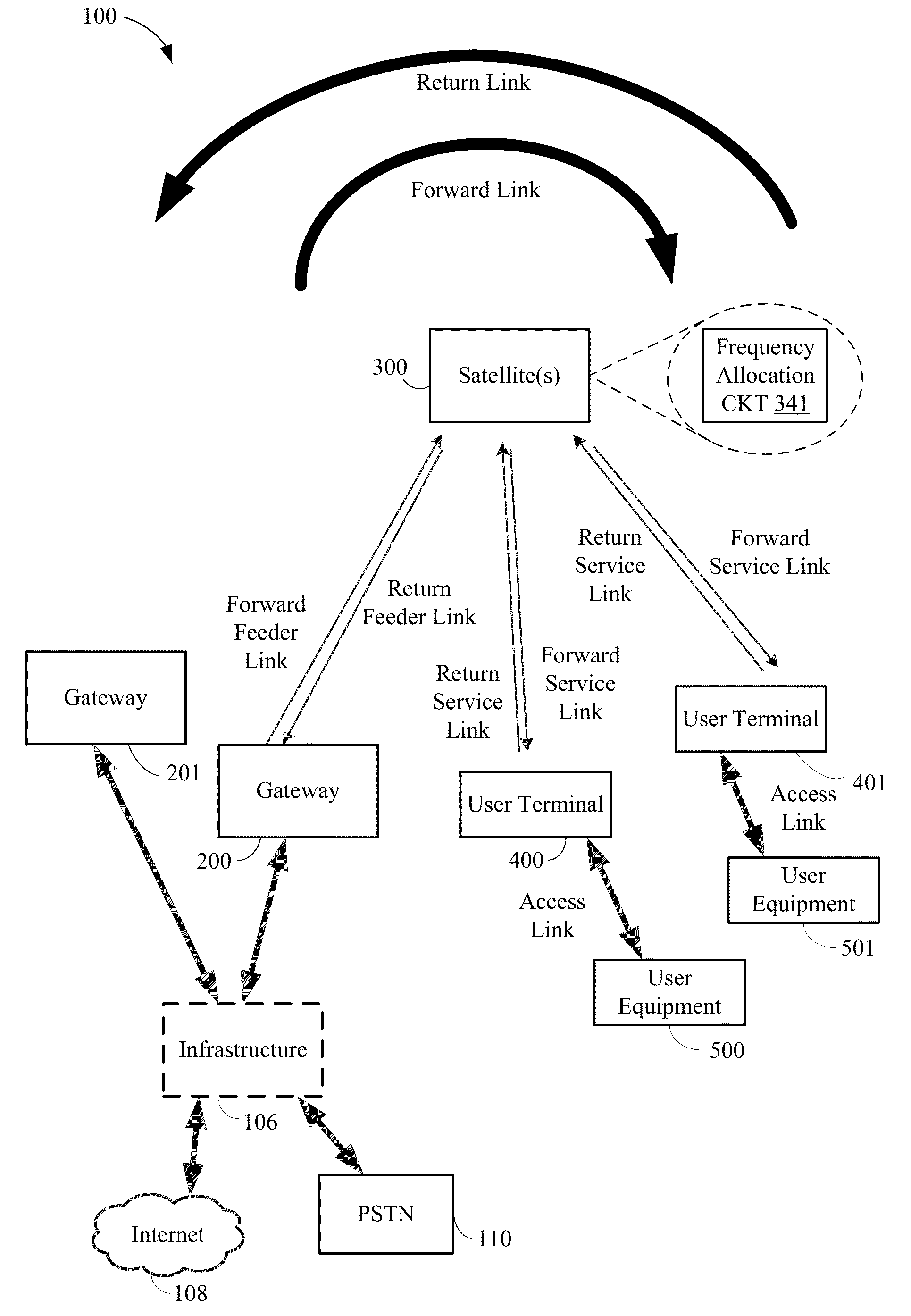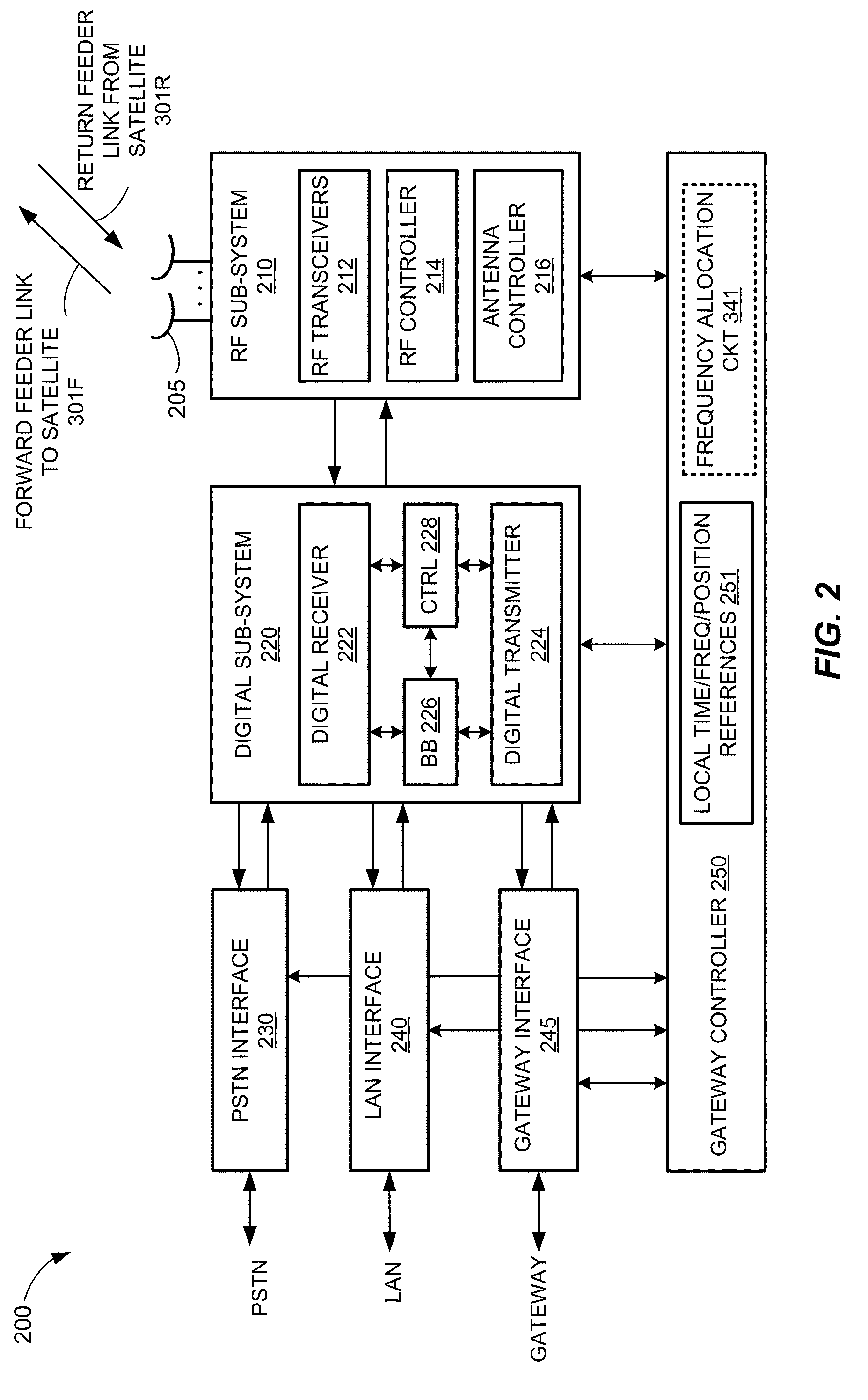Dynamic frequency allocation of satellite beams
a satellite beam and dynamic technology, applied in the field of satellite communications, can solve the problems of reducing the overall capacity of the ngso satellite, limiting the number of satellites that may be placed in the gso, and unnecessary coverage gaps in the ngso satellite communication system
- Summary
- Abstract
- Description
- Claims
- Application Information
AI Technical Summary
Benefits of technology
Problems solved by technology
Method used
Image
Examples
Embodiment Construction
[0030]The example implementations described herein may allow each satellite in an NGSO satellite constellation to re-allocate resources associated with a disabled beam to another, non-disabled beam. As described in more detail below, a number of beams may be transmitted from each of the satellites in the NGSO satellite constellation. Each satellite may allocate a number of different frequency bands to the one or more beams. Thereafter, if a first beam is disabled (e.g., to comply with EPFD limits), then the satellite may re-map the frequency associated with the first beam to a second beam that is not disabled. In this manner, frequency resources initially allocated to a disabled beam may be re-mapped to another, non-disabled beam.
[0031]Aspects of the disclosure are described in the following description and related drawings directed to specific examples. Alternate examples may be devised without departing from the scope of the disclosure. Additionally, well-known elements will not b...
PUM
 Login to View More
Login to View More Abstract
Description
Claims
Application Information
 Login to View More
Login to View More - R&D
- Intellectual Property
- Life Sciences
- Materials
- Tech Scout
- Unparalleled Data Quality
- Higher Quality Content
- 60% Fewer Hallucinations
Browse by: Latest US Patents, China's latest patents, Technical Efficacy Thesaurus, Application Domain, Technology Topic, Popular Technical Reports.
© 2025 PatSnap. All rights reserved.Legal|Privacy policy|Modern Slavery Act Transparency Statement|Sitemap|About US| Contact US: help@patsnap.com



